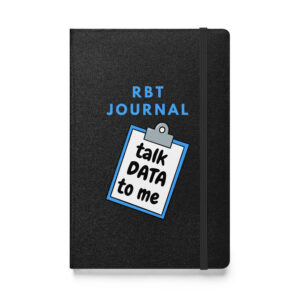Naturalistic Teaching
Table of Contents
Welcome back to our RBT Competency Assessment blog post series! This post will cover task number 7 on the RBT competency assessment: naturalistic teaching. In this series, we are exploring each task on the RBT Competency Assessment to help new Behavior Technicians (BTs) prepare for their initial competency assessments and provide a valuable refresher for Registered Behavior Technicians (RBTs) renewing their certification.
Naturalistic Teaching, also known as Natural Environment Teaching (NET), is a key strategy in the field of Applied Behavior Analysis (ABA). Unlike structured teaching methods like Discrete Trial Teaching (DTT), NET takes place in the learner’s natural environment and focuses on using naturally occurring opportunities to teach and reinforce skills. This approach is highly effective for promoting generalization and maintenance of skills, as it allows learners to practice and apply their skills in real-world contexts.
In this blog post, we will cover what Naturalistic Teaching is, why it is important, and how it is used in ABA. We will also discuss ways to generalize skills taught in DTT to the natural environment. By mastering Naturalistic Teaching techniques, RBTs can enhance their ability to provide individualized and effective interventions that promote meaningful and lasting behavior change. Let’s begin by defining Naturalistic Teaching and discussing its role and significance in ABA.
What is Naturalistic Teaching?
Definition and Explanation:
Naturalistic Teaching, also known as Natural Environment Teaching (NET), is a teaching approach used in Applied Behavior Analysis (ABA) that focuses on using naturally occurring opportunities and environments to teach and reinforce skills. Unlike structured teaching methods like Discrete Trial Teaching (DTT), which takes place in a controlled setting, NET occurs in the learner’s natural environment, such as at home, in the community, or during play. This method leverages the learner’s interests and everyday activities to create meaningful learning experiences.
Role in ABA:
In ABA, Naturalistic Teaching plays a crucial role in promoting the generalization and maintenance of skills. By teaching skills in the context where they will naturally occur, learners are more likely to use these skills independently in their daily lives. NET is especially effective for teaching communication, social, and adaptive skills, as it allows learners to practice these skills in real-world situations.
Key Principles and Characteristics of NET:
- Child-Led: The teaching follows the learner’s interests and motivations, making the learning process more engaging and effective.
- Embedded in Routine Activities: Skills are taught and reinforced within the context of routine activities, such as mealtime, playtime, or community outings.
- Functional Skills: Focuses on teaching skills that are immediately useful and relevant to the learner’s daily life.
- Natural Reinforcement: Uses naturally occurring consequences and reinforcers, such as praise, access to preferred items, or social interactions, to encourage desired behaviors.

Why is Naturalistic Teaching Important?
Benefits of Using NET:
- Promotes Generalization: By teaching skills in various natural environments, learners are more likely to generalize these skills across different settings and situations.
- Enhances Motivation: Following the learner’s interests and using natural reinforcers increases motivation and engagement, making learning more effective.
- Builds Functional Skills: NET focuses on teaching practical and functional skills that are directly applicable to the learner’s everyday life.
- Supports Independence: By practicing skills in real-world contexts, learners are better equipped to use these skills independently.
Impact on Client Progress and Generalization of Skills:
Naturalistic Teaching helps learners apply what they have learned in structured settings, like DTT, to their everyday lives. This promotes independence and improves the overall quality of life for individuals receiving ABA therapy. The skills taught through NET are more likely to be maintained over time because they are practiced in the context in which they will be used. Additionally, NET fosters a more enjoyable and less rigid learning experience, which can lead to better cooperation and faster skill acquisition.
Using Naturalistic Teaching in ABA
Techniques and Strategies for Implementing NET:
Follow the Learner’s Lead: In Naturalistic Teaching, it is crucial to follow the learner’s interests and motivations. Observe what the learner is interested in and use those interests as opportunities for teaching. For example, if a child is playing with blocks, the therapist can use that moment to teach color names, counting, or requesting more blocks.
Incorporate Teaching into Daily Activities: Embed learning opportunities into routine activities. For instance, during snack time, you can teach the learner to request different items, identify colors of food, or follow simple instructions like “take a bite.”
Use Natural Reinforcers: Reinforcers that occur naturally within the activity are more meaningful and effective. For example, if a learner asks for a toy correctly, the natural reinforcer is giving them the toy. This approach helps the learner understand the immediate benefits of using their skills.
Modeling and Imitation: Demonstrate the desired behavior or skill and encourage the learner to imitate it. For example, if you want to teach a child to say “hello,” you can model the greeting when someone enters the room and prompt the child to do the same.
Prompting and Fading: Provide prompts to help the learner respond correctly, and gradually fade these prompts as the learner becomes more proficient. This ensures that the learner can perform the skill independently over time.
Create Opportunities for Communication: Set up the environment to encourage communication. For example, place desired items out of reach but within sight, prompting the learner to request them.
Additional Examples of Naturalistic Teaching Scenarios:
- Playtime: During playtime, use toys and games to teach turn-taking, sharing, and requesting. For example, if the learner wants a specific toy, prompt them to ask for it using appropriate language.
- Community Outings: During a trip to the park or grocery store, teach the learner to follow instructions, identify objects, and interact socially. For example, at the park, you can teach the learner to say “hi” to other children or identify different playground equipment.
- Household Chores: Involve the learner in household tasks to teach life skills and following instructions. For example, while cooking, you can teach the learner to follow a recipe, measure ingredients, and identify kitchen tools.
Generalizing Skills from DTT to NET
Importance of Generalization in ABA:
Generalization is the ability to apply learned skills across different settings, situations, and people. It is a critical goal in ABA because it ensures that the skills taught in therapy are useful and functional in the learner’s everyday life. Without generalization, skills learned in a structured environment may not be effectively used in real-world contexts.
Strategies for Transferring Skills from DTT to NET:
Use Functional and Varied Stimuli: In DTT, use a variety of stimuli that the learner is likely to encounter in their natural environment. This helps prepare the learner to recognize and respond to these stimuli outside of the therapy setting.
Practice Skills in Different Settings: Gradually transition from teaching skills in a structured environment to practicing them in natural settings. For example, if a learner has mastered identifying colors in the therapy room, practice the same skill in different rooms of the house or at the park.
Involve Different People: Ensure that the learner practices skills with various people, not just the therapist. This can include family members, peers, and teachers. It helps the learner understand that the skill is useful in interactions with everyone, not just during therapy.
Reinforce Generalization: Provide reinforcement when the learner uses a skill correctly in a new setting or with a different person. This encourages the learner to continue using the skill in various contexts.
Examples of Generalizing Skills from DTT to NET:
- Skill Taught in DTT: Motor imitation rub hands togehter.
- Generalization in NET: Before eating lunch, the learner washes their hands with the assistance of their RBT and is able to independently rub the soap on their hands.
- Skill Taught in DTT: Identifying colors.
- Generalization in NET: While playing outside, the learner identifies the colors of flowers and leaves.
By effectively using Naturalistic Teaching and promoting the generalization of skills, RBTs can help learners apply what they have learned in structured settings to their everyday lives, leading to greater independence and improved quality of life.
FAQ on Naturalistic Teaching in ABA
The following FAQ section consists of the four most Googled questions on the topic of Naturalistic Teaching.
- Q: What is naturalistic teaching?
- A: Naturalistic teaching, also known as Natural Environment Teaching (NET), is a teaching approach used in Applied Behavior Analysis (ABA) that leverages naturally occurring opportunities and environments to teach and reinforce skills. It involves following the learner’s interests and motivations to create meaningful and engaging learning experiences within their natural settings, such as at home, in the community, or during play. This method aims to promote generalization and maintenance of skills by practicing them in real-world contexts.
- Q: What is considered a naturalistic teaching strategy?
- A: A naturalistic teaching strategy is any teaching method that occurs in the learner’s natural environment and uses naturally occurring reinforcers. These strategies include:
- Incidental Teaching: Creating learning opportunities based on the learner’s spontaneous actions and interests.
- Pivotal Response Training (PRT): Targeting key areas of development, such as motivation and self-management, to produce broad improvements in behavior.
- Milieu Teaching: Embedding teaching within the natural interactions and routines of the learner.
- Natural Language Paradigm: Encouraging language development through play and natural interactions.
- A: A naturalistic teaching strategy is any teaching method that occurs in the learner’s natural environment and uses naturally occurring reinforcers. These strategies include:
- Q: What is an example of naturalistic training?
- A: An example of naturalistic training is using playtime to teach language and social skills. For instance, if a child is playing with toy cars, the therapist can take the opportunity to teach colors by asking the child to identify the colors of the cars. The therapist can also encourage social interactions by prompting the child to ask for a turn or share the toys with peers. The reinforcement is natural and immediate, such as giving the child the car they requested or praising them for sharing.
- Q: What is the naturalistic approach in education?
- A: The naturalistic approach in education focuses on teaching and learning in natural settings, using real-life experiences and interactions to develop skills. This approach is learner-centered and emphasizes the importance of context in learning. It encourages exploration, curiosity, and active participation from learners, making the learning process more engaging and relevant. In ABA, this approach helps learners apply and generalize skills across various environments, enhancing their ability to function independently in their daily lives.
Final Thoughts
Naturalistic Teaching (NET) is a vital approach in Applied Behavior Analysis (ABA) that emphasizes the use of naturally occurring opportunities and environments to teach and reinforce skills. By integrating learning into the learner’s everyday activities and interests, NET promotes the generalization and maintenance of skills, making them more functional and applicable in real-world contexts. This method not only enhances motivation and engagement but also supports the development of practical and independent living skills.
Understanding and implementing Naturalistic Teaching techniques, alongside structured methods like Discrete Trial Teaching (DTT), allows RBTs to create comprehensive and individualized intervention plans. These plans help learners achieve meaningful and lasting behavior change, leading to greater independence and improved quality of life. By mastering NET, RBTs can provide more effective and personalized care, ensuring that each learner reaches their full potential.
Explore More Resources
If you found this guide on Naturalistic Teaching (NET) helpful, be sure to explore more resources on our website. We offer a wealth of information, including detailed articles, study guides, and practical tips to help you succeed as a Registered Behavior Technician (RBT).
Are you preparing for the RBT competency assessment? Check out our comprehensive study materials and mock exams designed to help you ace the test and become a confident, competent RBT.
For more information on becoming a Registered Behavior Technician and for the latest research and resources in Applied Behavior Analysis, visit the Behavior Analyst Certification Board (BACB) website.
Share this blog with your peers and colleagues to spread the knowledge and support the ABA community!



